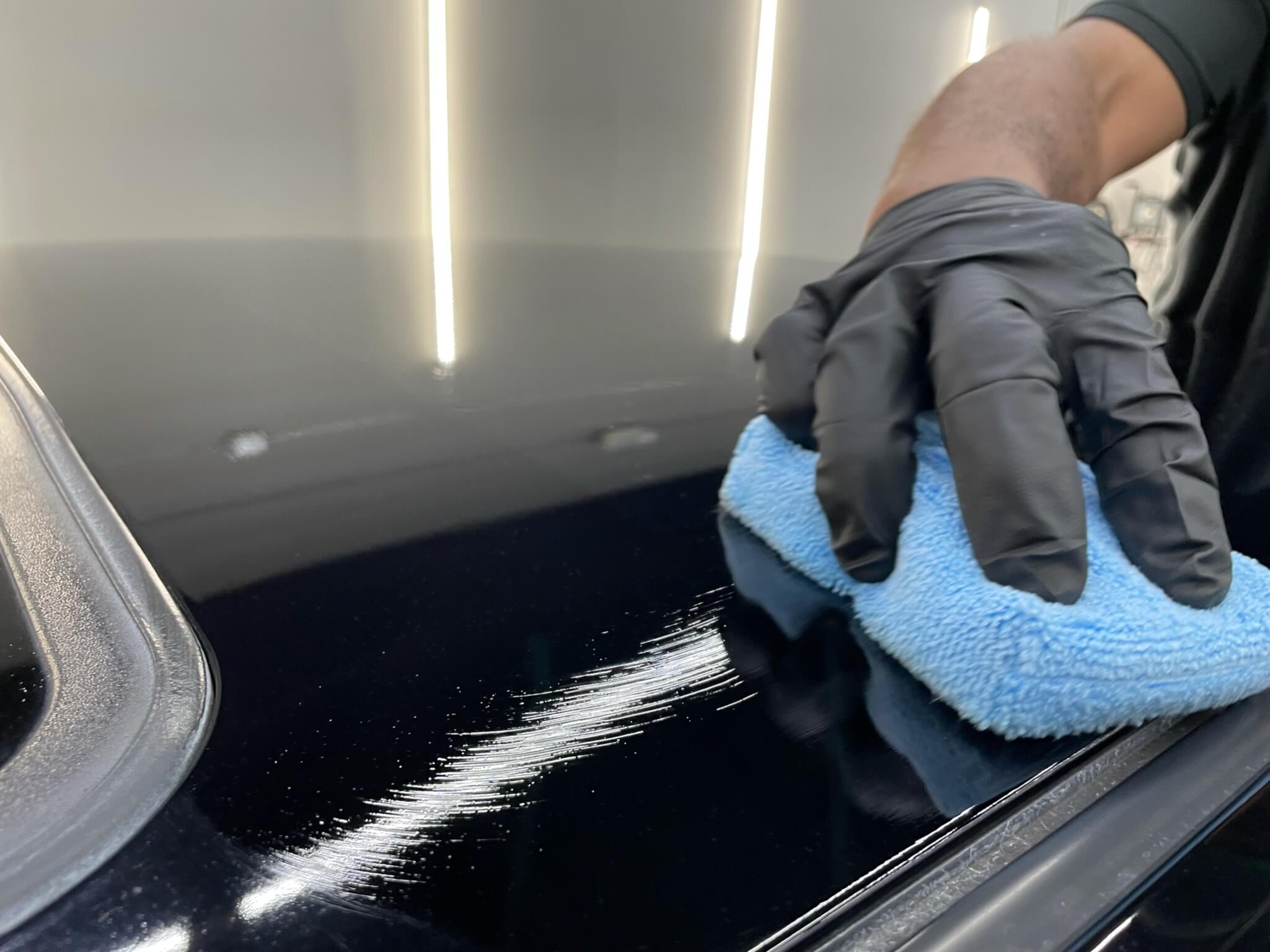Why Ceramic Finishing Is the Ultimate Option for a Remarkable Finish
Ceramic layer has become a leading option for those seeking a flawless coating for their vehicles, many thanks to its impressive resilience and safety functions. This innovative liquid polymer not just bonds seamlessly with manufacturing facility paint however also supplies a powerful obstacle versus common dangers such as scrapes, UV rays, and toxic wastes. In addition, its hydrophobic properties simplify maintenance while improving aesthetic charm. Nevertheless, recognizing exactly how this technology contrasts to traditional methods and discovering its application subtleties can disclose much more about its worth. What elements genuinely established ceramic coating apart?
What Is Ceramic Layer?

When used properly, ceramic covering creates a hydrophobic surface area that fends off water and dust, making it simpler to cleanse and keep. Unlike standard waxes or sealers, which generally offer temporary security, ceramic finishings can last for numerous years, depending on the item top quality and application method. The process of applying ceramic finishing requires meticulous preparation, including extensive cleaning and in some cases repaint adjustment, to make sure ideal bonding and performance.
Ceramic coverings are not limited to automotive surfaces; they can also be made use of on numerous materials, consisting of glass, steel, and plastics, supplying a versatile remedy for enhancing security. On the whole, ceramic finish represents a significant innovation in surface protection technology, incorporating both functional and visual benefits for a variety of applications.
Benefits of Ceramic Layer
While numerous surface defense alternatives exist, the advantages of ceramic covering stick out because of its special residential or commercial properties and lasting performance. One of the primary benefits is its outstanding toughness. Ceramic Coating Philadelphia. Unlike typical wax or sealants that need regular reapplication, ceramic layers give a resilient layer that can last for numerous years, dramatically decreasing maintenance efforts
Another remarkable benefit is boosted security versus ecological pollutants. Ceramic finishes develop a hydrophobic surface that pushes back water, dirt, and numerous contaminants, making it easier to clean. This function not only maintains the lorry's look but also lessens the threat of corrosion and oxidation, especially in extreme weather problems.
In addition, ceramic coatings provide premium resistance to UV rays, preventing fading and deterioration of paint in time. This UV protection is critical for preserving the visual worth of surfaces and automobiles subjected to route sunshine.
Furthermore, company website the shiny finish accomplished with ceramic finishing boosts the total visual allure, providing surface areas a showroom-quality sparkle. On the whole, ceramic layers stand for a substantial improvement in surface area security innovation, giving long-lasting benefits that satisfy both aesthetic and practical requirements.
Just How It Functions
Understanding the science behind ceramic layers discloses how they provide such exceptional security and durability. At its core, a ceramic finish is a liquid polymer that chemically bonds with the automobile's factory paint.
The application procedure involves numerous steps, consisting of surface preparation, which is crucial to accomplishing optimum bond. As soon as used, the finishing undergoes a healing process, throughout Look At This which it hardens and develops a semi-permanent bond with the paint surface. This bond is what identifies ceramic layers from standard waxes and sealers, supplying a longer-lasting safety obstacle that can endure for years.
Additionally, the density of the covering can improve its protective qualities, making sure that it can stand up to rough problems. Inevitably, the science of ceramic finishes integrates sophisticated products with cutting-edge application techniques to provide an exceptional degree of defense and aesthetic enhancement for vehicles.
Comparison With Standard Methods
The advantages of ceramic finishings become particularly evident when compared to conventional paint security techniques such as waxes and sealants. While waxes provide a temporary luster, commonly lasting a few weeks to a couple of months, ceramic coatings give a long-lasting safety layer that can endure for several years. This longevity considerably reduces the frequency of reapplication, making ceramic coverings a much more cost-effective solution gradually.
Furthermore, standard approaches usually need considerable preparation and multiple applications to attain an adequate degree of security. On you can try these out the other hand, ceramic coatings bond at a molecular level with the lorry's surface, developing a durable shield versus environmental contaminants like UV rays, acid rainfall, and road salts. This bond improves the lorry's resistance to scratches and swirl marks, which are prevalent with traditional waxes and sealers.
Furthermore, the hydrophobic homes of ceramic finishes drive away water and dirt, resulting in much easier cleaning and upkeep. On the other hand, wax and sealant-treated surfaces can draw in grime, necessitating more frequent cleaning - Ceramic Coating Philadelphia. Overall, ceramic finishings not just supply remarkable security however additionally supply a more visually appealing and enduring finish, establishing them as the favored choice for critical automobile owners
Application and Upkeep Tips

Utilizing a foam applicator, use the layer in tiny areas, adhering to the maker's guidelines concerning thickness and overlap. Enable adequate healing time between layers, typically 24 hours, to ensure correct bonding. After application, it is vital to stay clear of direct exposure to water or severe components for a minimum of a week to allow the coating to completely heal.
In addition, using a ceramic upkeep spray can boost the covering's hydrophobic residential properties and longevity. Normal examinations for any type of indications of wear will certainly help keep the finishing's stability and preserve that beautiful coating.
Verdict
In verdict, ceramic layer arises as a superior choice for attaining a remarkable automotive finish. By forming a robust bond with manufacturing facility paint, ceramic covering efficiently shields versus scratches, UV rays, and environmental pollutants.
